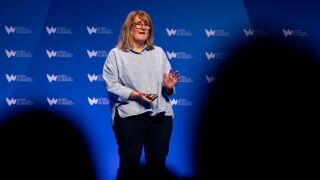The construction of major cable systems connecting Europe with Asia, and Asia with the west coast of the US, has been big business for several years. But recently the steady flow of fresh projects has turned into a flood.
New systems set to come on-line over the next year or two include SEA-ME-WE 5 – scheduled to run between Singapore and France, connecting a total of 17 countries over its 20,000km route when it enters service in the first quarter of 2016.
Asia-Africa-Europe 1 (AAE-1) will plough a slightly different furrow when it is lit, also in 2016. It is set to be the first high-capacity consortium cable that links all of the major south east Asian economies with Europe, via Africa and the Middle East. Across the Pacific, the FASTER cable network – backed by SingTel, China Mobile International, China Telecom Global, Global Transit, Google and KDDI – is being optimised for bandwidth-hungry content flowing between Japan and Los Angeles. Its design capacity of 60Tbps will, claim backers, be capable of carrying 12,000 HD movies per second.
Global Cloud Xchange, formerly Reliance Globalcom, says it is also building a high-performance link between Japan and California. The Pacific Cloud Xchange cable will make the purchase and rental of fibre capacity easy for smaller providers of cloud services, says GCX.
Seven partners are collaborating over the construction of SEA-US, which is due to complete by late 2016, boosting capacity between critical south east Asian growth economies such as Indonesia and the Philippines and the US. At an earlier stage of planning is the New Cross Pacific (NCP) cable system, set to directly connect China, Japan, South Korea, Taiwan and North America when it launches in mid-2017. Between them, these new launches will undoubtedly help to ease the strain on the heavily-loaded networks that currently serve to connect western Europe, the Middle East, Asia and the US. They will in many cases also be offering capacity purchasers an alternative to well-trodden routes where cables have all too often proved vulnerable to damage, both man-made and natural.
“The APAC region has had more outages than any other region in the world over the last few years due to earthquakes, tsunamis, monsoons and a tremendous amount of ship-induced cable cuts,” says Steve Grubb, director of optical systems with vendor Infinera. “The tsunami of 2011 cut half of the submarine cables going to Japan, and there are perhaps 10-12 major submarine repairs occurring in APAC right now, including a major outage in Vietnam.”
The newer cables will in many cases be founded on more flexible and favourable business models than the older plant. Shady Masarweh, head of capacity business management at BICS, says the company has already contracted to use AAE-1 because of its commercial proposition: “It has an open model in line with the needs of a wholesale player,” he says. “AAE-1 consolidates our access to east Africa and Middle East, along with our EIG investment. Next to that it provides a low-latency route to Singapore and Hong-Kong. I believe that the Europe-to-Asia route will be well served after 2017 and I do not think that there will be new projects on that route for a while.”
Fresh purpose
New Asian submarine cables generally serve one or both of two key purposes, says Ooi Seng Keat, VP carrier services with SingTel Group Enterprise: “Firstly, they supplement older cables in providing additional diversity and improving the reliability of the network infrastructure connecting the region. Secondly, due to the adoption of new technology, they provide a better unit cost structure. This eventually benefits consumers at large where the cables are connected.”
Hon Kit Lam, VP, international transmission and IP services GNS at Tata Communications, sees a multitude of not necessarily related drivers behind this latest wave of projects: “There have been a number of large-scale data centre projects in Asia, which need larger capacity,” he explains.
Lam believes the majority of investors are also motivated by the booming economies of the region as a whole leading to a surging number of devices, and machines, that need connectivity to the global grid: “We’re seeing growth in particular in certain south east Asian economies where there’s a population of tens of millions and in some cases only 10% internet penetration,” he points out. “This clearly has high potential for growth. It also means demand for cables that take a different to normal path to account for that growth.”
Changing priorities
There is without doubt a degree of repetition in the routes taken by many of the existing systems that link Europe to Asia. Of the cables launched in the past 10 years, only SEA-ME-WE 4 goes direct from south east Asia to Europe, with the others all terminating in south Asia. With patterns of commerce changing and weight of traffic subtly shifting, there is now a stronger argument than ever for direct links to Europe from places like Malaysia, Singapore and Hong Kong, perhaps taking in a once-dormant economy like Myanmar on the way. It is noteworthy than many of the older cables plying Asia to North America were conceived at a time when China’s economy was a lot more isolated than it is now. The newer trans-Pacific projects have huge backing from Chinese interests.
There is besides the inescapable fact that Asia has a greater reliance on subsea capacity than other parts of the world. Europe and North America have vast terrestrial networks, while Asia is in the main “a bunch of islands”, as Bill Barney, CEO of Global Cloud Xchange (GCX) describes it. The company is about to embark on building the Pacific Cloud Xchange between Tokyo and Silicon Valley: “You can put all the fibre you want in Europe, and nobody cares,” he says. “Plus it costs a lot less money building on land. Asian cables get disproportionate attention. You also have to consider too that 17% of the global economy is now service-based, and services tend to rely on connectivity. Asia is heavily service focussed.”
Asia is also increasingly a generator, mover and storer of content, points out Ed McCormack, VP international accounts and submarine systems at vendor and upgrade specialist Ciena: “CSPs are dominating the buying of bandwidth these days,” he claims. “They need very large networks, built data centre-to-data centre. Previous generations of Asian cables had different customers in mind. CSP pressure has created new routes as well as unprecedented levels of demand. They’ve been a major influence. And because of the nature of their businesses, their demand is a global thing, not point-to-point. The impact of players like Netflix has changed buying patterns.”
One should also never rule out commercial one-upmanship and vanity as cable drivers, says Alan Mauldin, research director with independent analyst firm TeleGeography: “A lot of companies are asking themselves if they want to invest in their own cable in order to get capacity at cost, or buy wholesale where they may be relying on a cable laid 10 years ago,” he says. “A lot of it is peer pressure too. If you are offered the chance to join a consortium, do you say no and give up your seat at the top table of operators in your region? It’s an ego thing.”
So can the current surge in new Asian capacity last? As long as Asia remains vibrant economically, it is hard to see it fading entirely.
Pioneer Consulting foresees the world’s total submarine traffic increasing from 140Tb in 2014 to a value of 1078Tb by 2018, with the bulk of the growth coming from the APAC region. Expect projects to match sooner or later.




